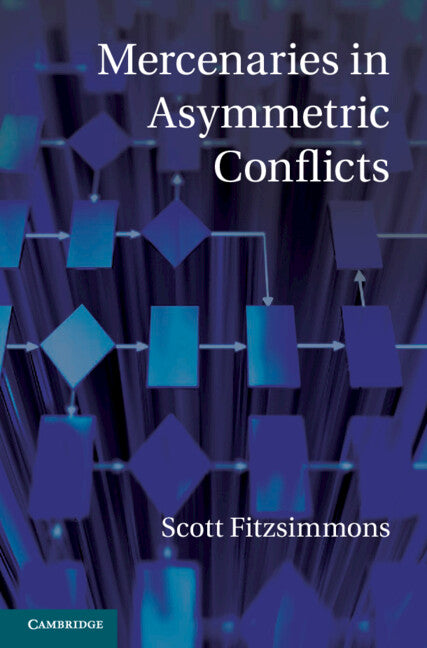Freshly Printed - allow 8 days lead
Couldn't load pickup availability
Mercenaries in Asymmetric Conflicts
Fitzsimmons argues that small mercenary groups must maintain a superior culture to successfully engage and defeat larger and better-equipped opponents.
Scott Fitzsimmons (Author)
9781107026919, Cambridge University Press
Hardback, published 24 September 2012
340 pages, 2 b/w illus. 8 tables
23.6 x 15.8 x 2.1 cm, 0.58 kg
“Fitzsimmons effectively casts aside the common state-centricity in international relations theory to give mercenary groups their due treatment. In so doing, he usefully adds to the ongoing conversation between neorealism and constructivism. What is more, his well-structured and rich empirical study provides the reader with a framework to contemplate the larger and growing phenomenon of armed non-state actors on the world stage.” – Dr. Christopher Spearin, Department of Defence Studies, Canadian Forces College
Scott Fitzsimmons argues that small mercenary groups must maintain a superior military culture to successfully engage and defeat larger and better-equipped opponents. By developing and applying competing constructivist and neorealist theories of military performance to four asymmetric wars in Angola and the Democratic Republic of Congo, he demonstrates how mercenary groups that strongly emphasize behavioral norms encouraging their personnel to think creatively, make decisions on their own, take personal initiative, communicate accurate information within the group, enhance their technical proficiency and develop a sense of loyalty to their fellow fighters will exhibit vastly superior tactical capabilities to other mercenary groups. Fitzsimmons demonstrates that although the victorious mercenary groups occasionally had access to weapon systems unavailable to their opponents, the balance of material capabilities fielded by the opposing military forces had far less influence on the outcome of these asymmetric conflicts than the culturally determined tactical behavior exhibited by their personnel.
1. The normative theory of military performance
2. Neorealist combat balance theory
3. 5 Commando puts down the Simba Rebellion
4. Callan's mercenaries are defeated in Northern Angola
5. Executive outcomes defeat UNITA
6. The White Legion abandons Zaire
7. Conclusion.
Subject Areas: International relations [JPS], Political science & theory [JPA], Military history [HBW]


